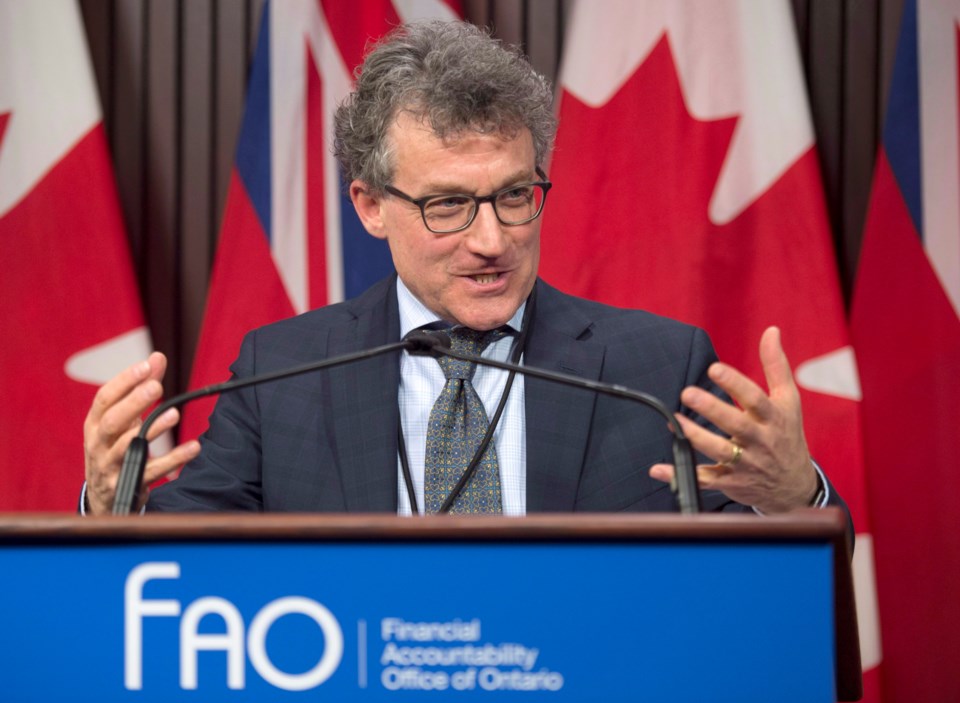Ontario's budget watchdog expressed some concern Wednesday over how the provincial government reports its spending, saying the consistent underspending he's seen is becoming a transparency issue.
Financial Accountability Officer (FAO) Peter Weltman released his latest report on government spending on Wednesday, covering the first three quarters of the 2022-23 fiscal year. The report also provides an update on the government's spending plans for this fiscal year.
In the third quarter, the province spent less than expected — meaning actual spending compared to what was in the plan — in all sectors. This includes a nearly $1.2 billion shortfall on Metrolinx and municipal infrastructure projects and $462 million less than expected on operating funding, $665 million less than planned on electricity subsidies, $644 less than expected on infrastructure capital programs, and more.
The total amount of money spent to date was just under $123 billion, while the spending plan accounted for just over $129 billion — about five per cent less.
It's perfectly normal for governments to spend less than expected, Weltman said, but not by this much. The normal range he's seen is around 2.7 per cent, so the five per cent number "is unusual," he said.
Weltman noted that less spending can result from capital projects getting delayed, warm winters leading to less money being used on electricity subsidies, and more. Governments are given authority to spend a certain amount by the legislature, and they can't go above it, so spending a little less is only prudent, he added.
But the Progressive Conservatives' underspending is becoming a bit more concerning for the financial watchdog.
"Now we're seeing a trend, an increase in the underspent amounts over the last couple of years. And so far, we're seeing that trend continue into this year," he said.
"That's a problem, because when (the government) presents their spending plan, they are getting approval from the people's representatives on what that plan is and how they plan to use it," he said. "And if there's a significant amount of money that isn't being used, but has been approved, that doesn't allow MPPs good insight as to the use of the money they've approved."
Treasury Board President Prabmeet Sarkaria said the FAO report is a "snapshot in time," a line the government uses to respond to every FAO report.
"It does not take into full consideration all of the investments that the government is making and has made throughout this year," he said.
The government will continue with its spending plan and "continue to make the investments that we have been since day one," he said. He cited the 14,000 new nurses the province registered this year, the highest on record, and the over 30,000 applications to the "Learn and Stay" grant, which is given to workers in key sectors to stay and work in underserved areas, as evidence the government is spending on key areas like health care.
Look to the public accounts for the true picture of government spending, Sarkaria argued.
Opposition MPPs didn't agree.
"It's concerning overall," said NDP Leader Marit Stiles. "What we've seen is a failure of this government to invest the dollars that have been allocated in important areas like the pandemic, child care, education, infrastructure, and that's irresponsible."
"This is a pattern, not a snapshot. It's happening over and over again," said NDP finance critic Catherine Fife. "What we see, and what Ontarians — I think — see is a government that is swimming in cash, and is refusing to invest the dollars that have been allocated to services that we count on."
Liberal finance critic Stephanie Bowman urged the government to use the unspent dollars to invest in areas like health care.
"A million dollar grant really goes a long way, or an increase in operating funding goes a long way to making a difference" for mental health clinics or clinics helping people deal with gender-based violence, she said.




